Category: Brain
-
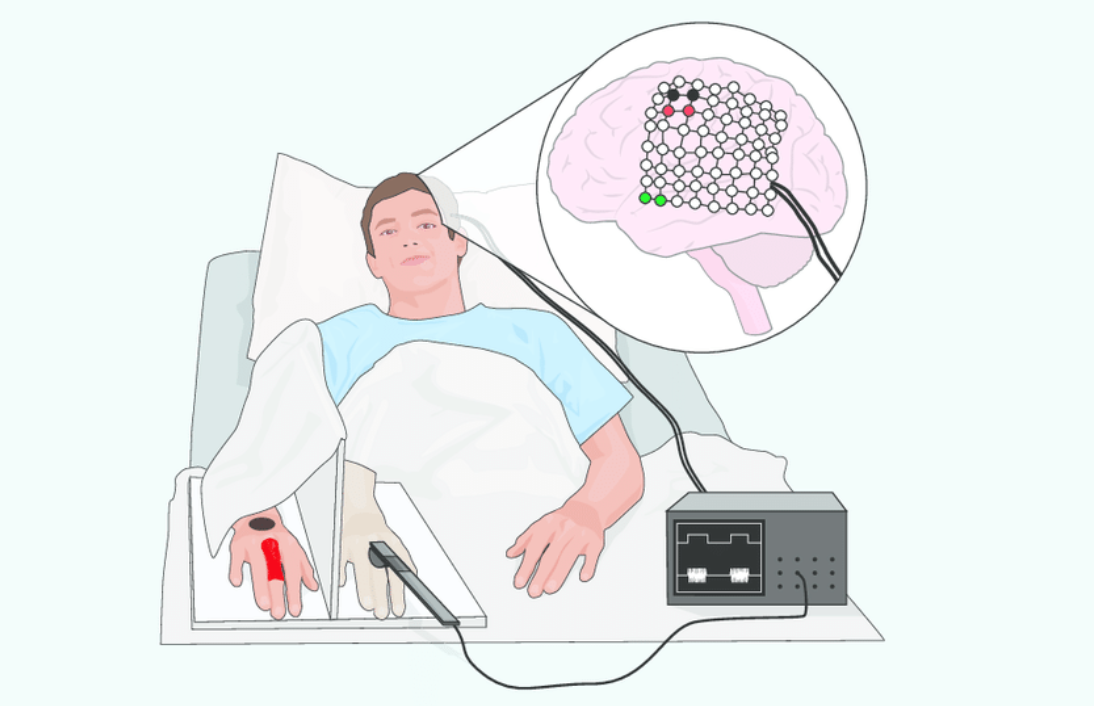
TMS + VR for sensory, motor skill recovery after stroke
EPFL’s Michela Bassolino has used transcranial magnetic stimulation to create hand sensations when combined with VR. By stimulating the motor cortex, subjects’ hand muscles were activated, and involuntary short movements were induced. In a recent study, when subjects observed a virtual hand moving at the same time and in a similar manner to their own…
-

Mary Lou Jepson on wearable MRI + telepathy | ApplySci @ Stanford
Mary Lou Jepsen discusses wearable MRI + holography-based telepathy at ApplySci’s Wearable Tech + Digital Health + Neurotech Silicon Valley conference – February 26-27, 2018 at Stanford University: Join ApplySci at the 9th Wearable Tech + Digital Health + Neurotech Boston conference – September 25, 2018 at the MIT Media Lab
-
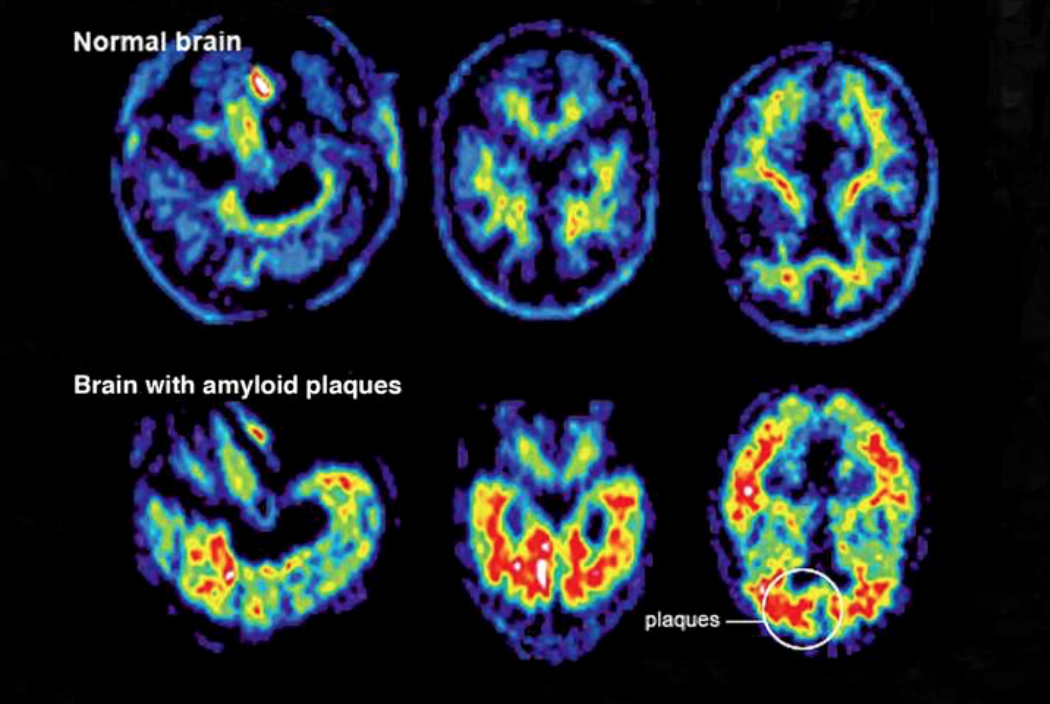
Brain scans, spinal fluid Alzheimer’s biomarkers
Clifford Jack and Mayo Clinic colleagues have proposed a biomarker, not behavior, based standard for Alzheimer’s disease diagnosis. Instead of defining the disease through symptoms such as memory or thinking problems, the researchers focus on biological changes, including brain plaques and tangles, determined by brain scans and spinal fluid tests. The new approach can help…
-
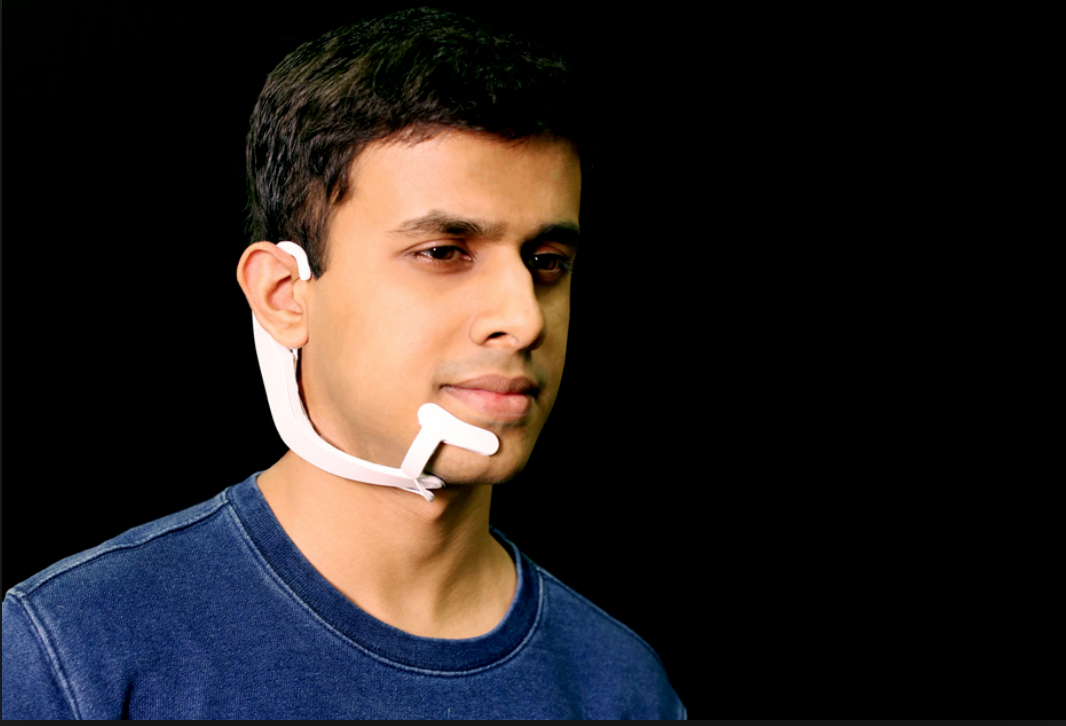
Bone-conduction headset for voice-free communication
MIT’s Arnav Kapur has created a device that senses and interprets neuromuscular signals created when we subvocalize. AlterEgo rests on the ear and extends across the jaw. A pad sticks beneath the lower lip, and another below the chin. It senses jaw and facial tissue bone-conduction, undetectable by humans. Two bone-conduction headphones pick up inner ear…
-

Phillip Alvelda: More intelligent; less artificial | ApplySci @ Stanford
Cortical founder and former DARPA NESD program manager Phillip Alvelda discusses AI and the brain at ApplySci’s Wearable Tech + Digital Health + Neurotech Silicon Valley conference on February 26-27, 2018 at Stanford University: Join ApplySci at the 9th Wearable Tech + Digital Health + Neurotech Boston conference – September 25, 2018 at the MIT Media…
-
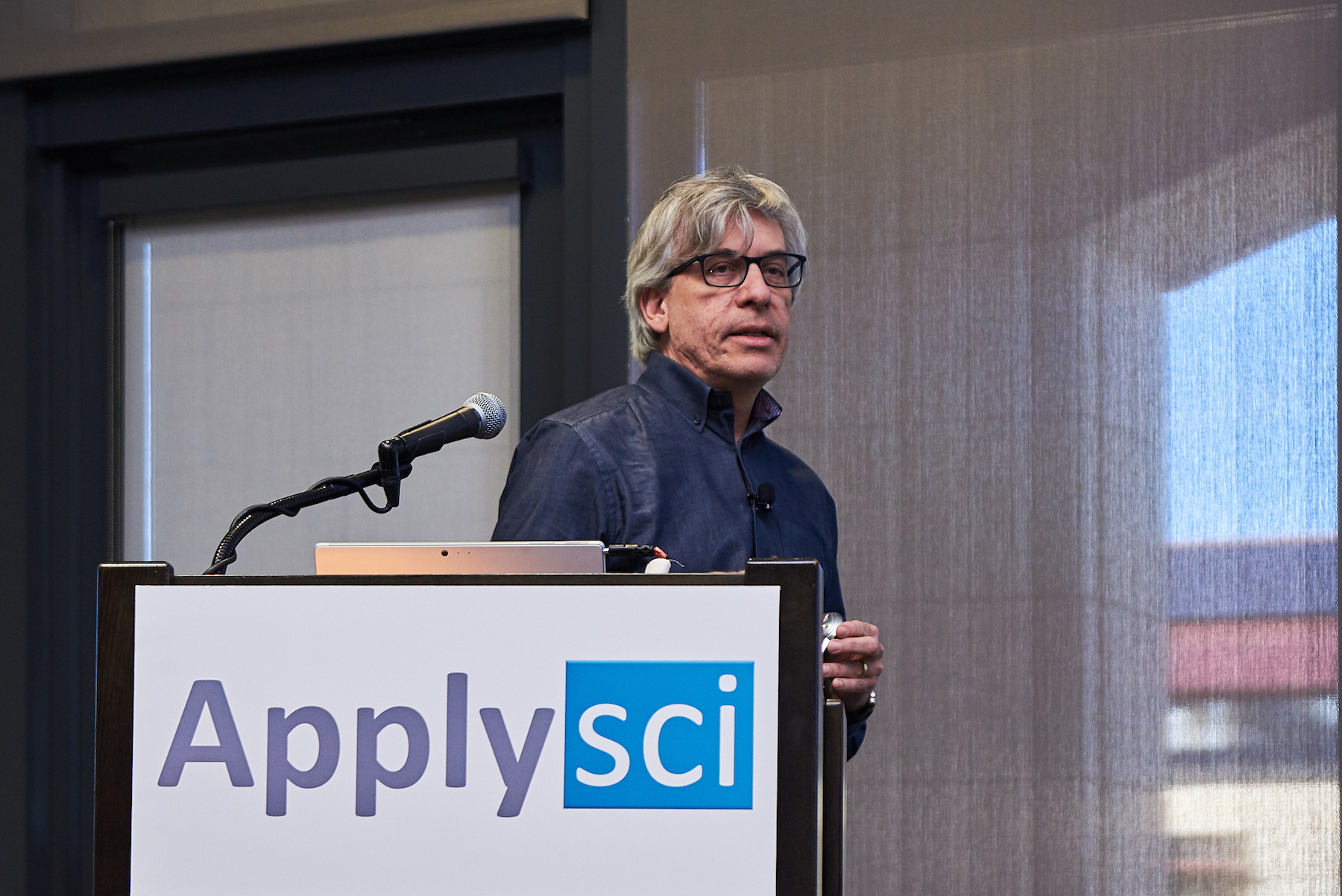
Bob Greenberg on visual prosthetics | ApplySci @ Stanford
Second Sight‘s Bob Greenberg discusses visual prosthetics at ApplySci’s Wearable Tech + Digital Health + Neurotech Silicon Valley conference, held on February 26-27, 2018 at Stanford University. Join ApplySci at the 9th Wearable Tech + Digital Health + Neurotech Boston conference on September 25, 2018 at the MIT Media Lab
-
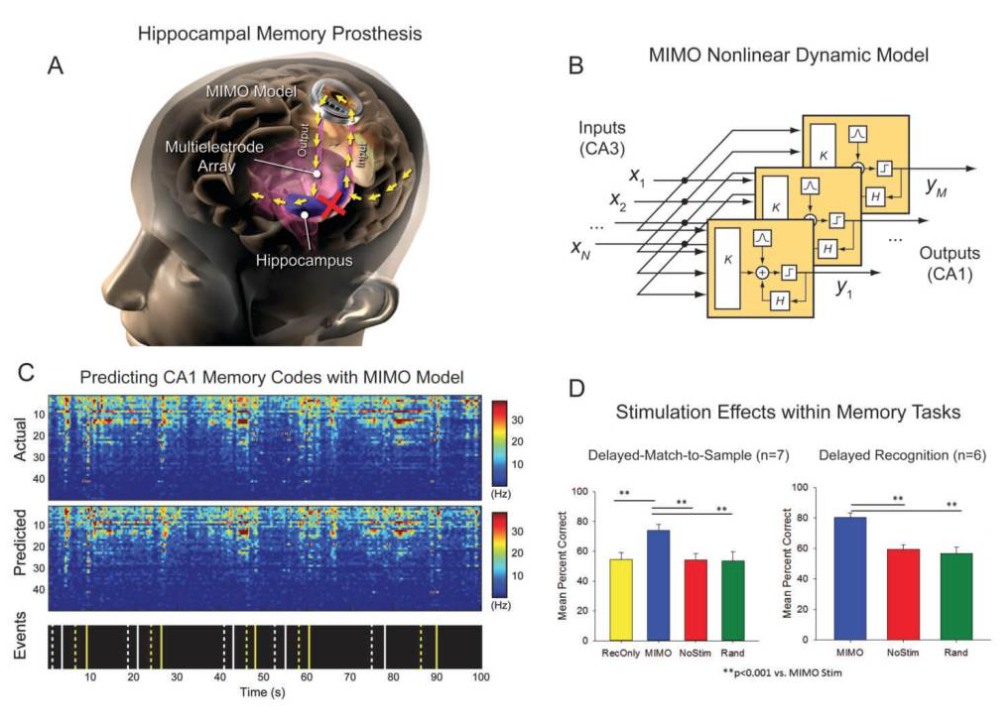
Prosthetic system uses one’s own patterns to encode, recall memory
Robert Hampson, and Wake Forest and USC colleagues, have developed a prosthetic system that uses a person’s own memory patterns to facilitate the brain’s ability to encode and recall memory. A recent study showed participants’ short-term memory performance showed a 35 to 37 percent improvement over baseline measurements. The study focused on improving episodic memory, which is…
-

Smartphone-derived cognitive function biomarkers
Mindstrong Health, led by Paul Dagum and Tom Insel, has completed a study suggesting that passive measures from smartphone use could be a continuous ecological surrogate for laboratory-based neuropsychological assessment. Smartphone use of 27 subjects who had received a gold standard neuropsychological assessment was analyzed for 7 days. Digital biomarkers with high correlations (p < 10−4) for working…
-
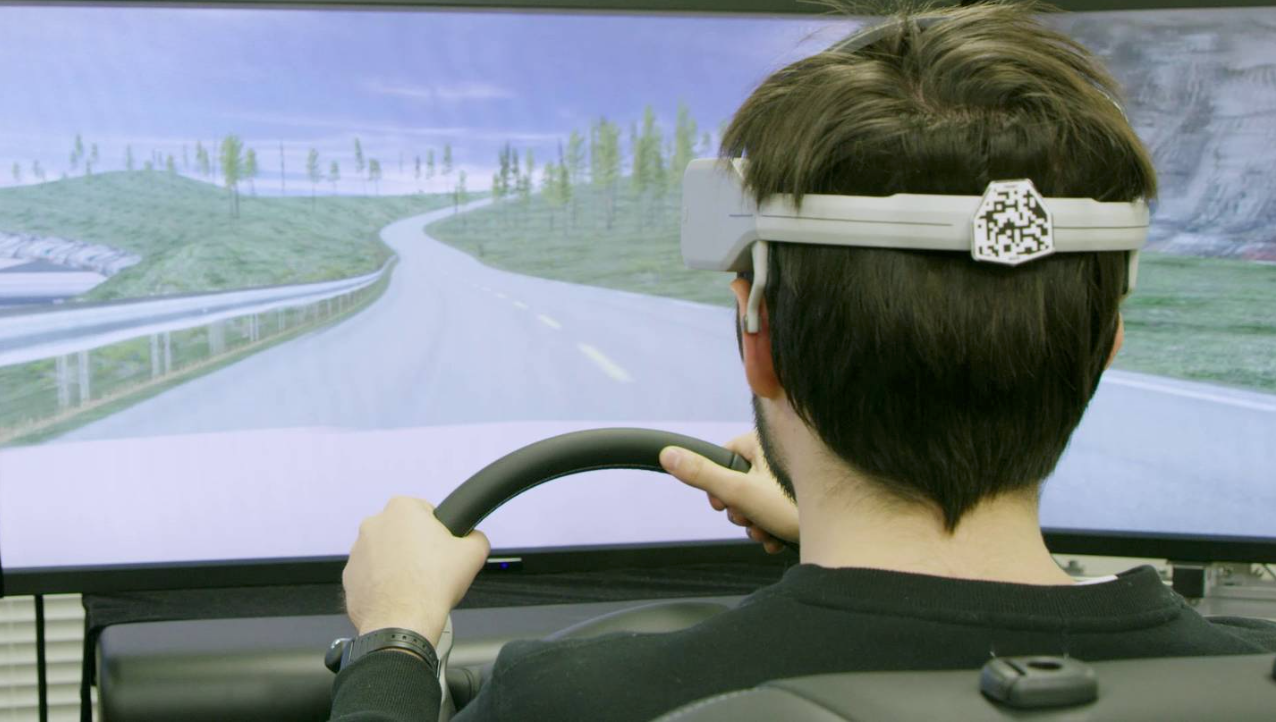
EEG + embedded sensors anticipate driver actions
José del R. Millán, EPFL and Nissan researchers are using EEG to read a driver’s brain signals and send them to a smart vehicle to anticipate if the driver will accelerate, brake or change lanes. Embedded sensors also monitor its environment to help in difficult conditions. Frontal motor cortex signals are detected using EEG and processed…
-
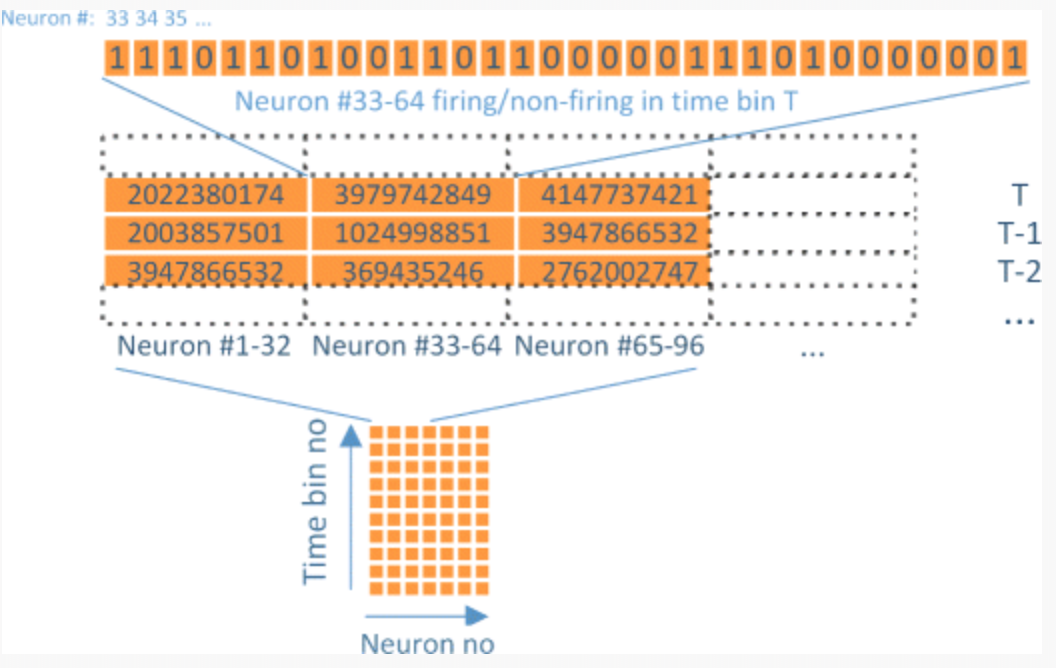
Software records, organizes, analyzes 1 million neurons in real-time
Martin Garwicz and Lund University colleagues have developed a novel method for recording, organizing, and analyzing enormous amounts of neurohysiological data from implanted brain computer interfaces. The technology simultaneously acquires data from 1 million neurons in real time. It converts spike data and sends it for processing and storage on conventional systems. Subject feedback is provided in…
-
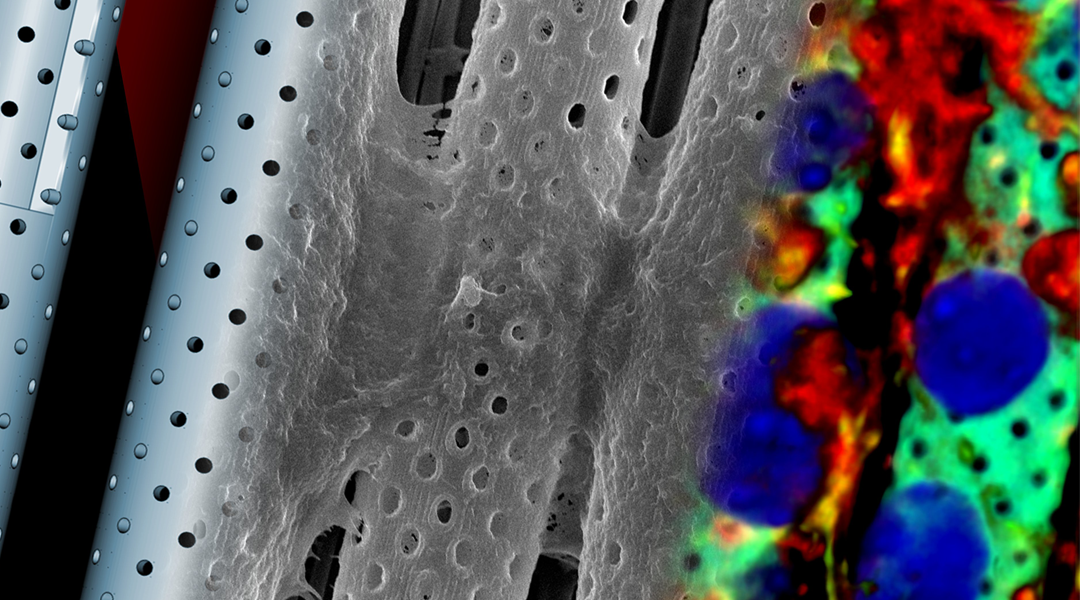
3D, real-scale blood brain barrier model used to study new therapeutics
Gianni Ciofani of ITT Pisa has created a device that reproduces a 1:1 scale model of the blood-brain barrier. The combination of 3D printed artificial and biological components will allow the study of new therapeutic strategies to overcome the blood-brain barrier and treat brain diseases, including tumors, Alzheimers, and multiple sclerosis. A laser that scans…
-
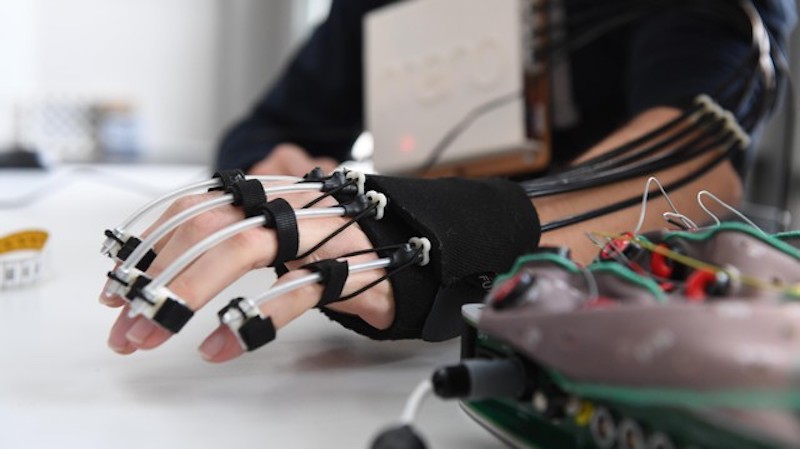
Lightweight, highly portable, brain-controlled exoskeleton
EPFL’s José Millán has developed a brain-controlled, highly portable exoskeleton, that can be quickly secured around joints with velcro. Metal cables act as soft tendons on the back of each finger, with the palm free to feel hand sensations. Motors that push and pull the cables are worn on the chest. Fingers are flexed when…